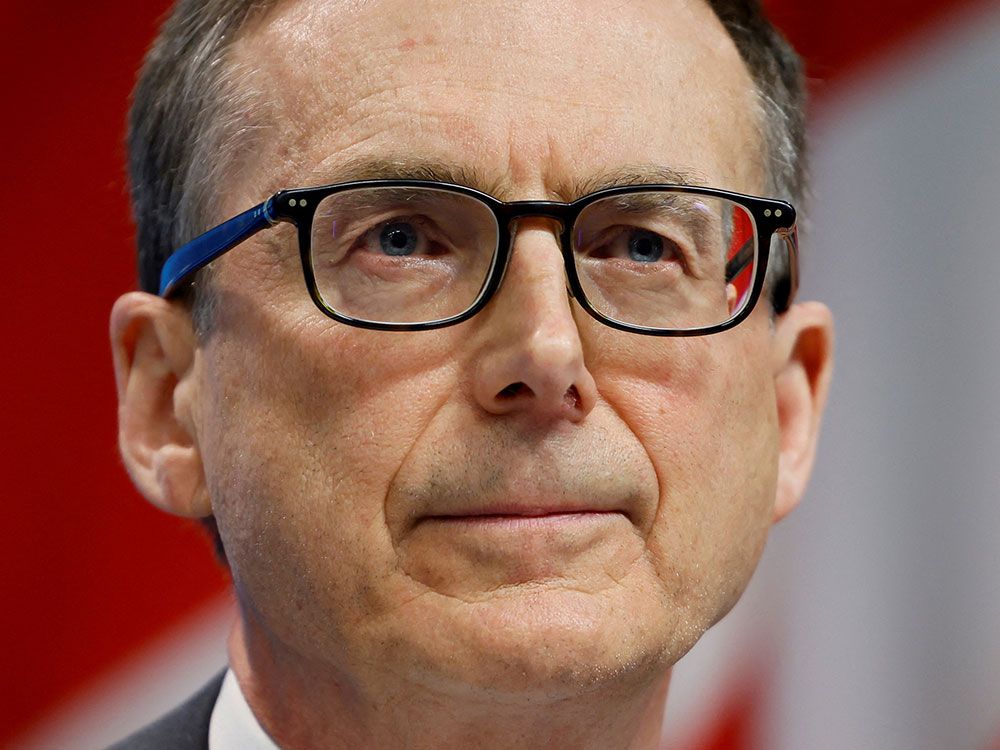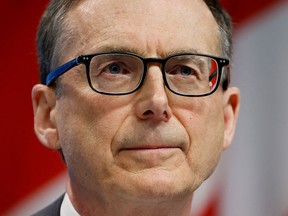Cooler inflation won’t sway Bank of Canada from another jumbo hike in September, economists say

Fifty basis points is minimum forecast from Bay Street after latest data

Article content
From hopeful remarks of peaking price pressures to warnings of becoming too complacent, Bay Street economists are reacting to the July inflation readings, which clocked in at a relatively cooler pace of 7.6 per cent compared to 8.1 per cent in June, according to Statistics Canada. The cool-off has largely been characterized as a gasoline story, seeing the pace of prices increase 35.6 per cent in July compared to the hotter pace of 54.6 per cent in June.
Advertisement 2
Story continues below
Article content
With core measures reaching a record 5.3 per cent in July and the agency warning that inflation remains broad-based, economists and business leaders say that the Bank of Canada’s mission to bring inflation back down to a two-per-cent reading is far from over. Here’s what the street had to say:
Claire Fan, economist at RBC Economics
“The dip in the headline rate was entirely accounted for by lower gasoline prices, which dropped to around $1.85/litre by the end of July after breaking the $2 per litre mark in June … Near-term headline inflation readings should continue to track gasoline prices lower. Indeed pump prices fell by another 6 per cent just over the first two weeks of August. Meantime, more cooling in the housing market, easing global supply chain constraints and lower commodity prices will all work to ease price pressure for a wider array of products.”
Advertisement 3
Story continues below
Article content
“It’s not unreasonable to expect the headline CPI rate, together with the breadth of inflation pressure to be turning a corner. But the pace of inflation is still far above the Bank of Canada’s comfort zone and consumer demand will likely need to soften a lot more for CPI growth to fully and sustainably return to the central bank’s one per cent to three per cent target range.”
Rate prediction: 75 basis points in September; a policy rate of 3.5 per cent by the end of the year.
Douglas Porter, chief economist at Bank of Montreal
“Probably the biggest theme from this latest reading is a significant rotation in where the most intense price pressures are coming from. Beyond the pullback in pump prices, there was also a clear calming down in a number of areas that saw a big pandemic boost (like furniture, appliances, clothing, tools, sporting goods and entertainment products) … Pulling these two conflicting trends together leaves us with still-high underlying inflation pressures of just over a five per cent pace. While there are many (too many!) core measures to pick and choose from, they are all sending the same message — underlying inflation is at least 2 percentage points above the top end of the BoC’s one-per-cent to three-per-cent target zone.
Advertisement 4
Story continues below
Article content
“This report is clearly a step in the right direction, but the journey is many miles… Yes, we may finally be past the peak of inflation — provided oil prices don’t run wild again — but it is likely to remain very sticky at close to eight per cent through the second half of this year before truly breaking lower in 2023.”
Rate prediction: Minimum of 50 basis points in September.
Royce Mendes, managing director and head of macro strategy at Desjardins
“Canadians looking at today’s consumer price data will be breathing a sigh of relief. For the first time since June 2021, the annual rate of inflation stands lower than it was in the prior month… It’s looking more and more like inflation will undershoot the Bank of Canada’s forecast for the third quarter of 8.0 per cent.
Advertisement 5
Story continues below
Article content
“But this is no time to get complacent. The 9.2 per cent decline in gasoline prices did a lot to blunt price growth in other areas… Excluding food and energy, prices rose 0.5 per cent in seasonally-adjusted terms in July, leaving the annual rate of that stripped down measure of inflation running at 5.5 per cent and the three-month annualized rate at 6.4 per cent. The average of the Bank of Canada’s three core measures also jumped up to 5.3 per cent, the highest on record.”
Rate prediction: Won’t be hiking by 100 basis points in September, but central bankers will likely hike by 50 basis points.
Karl Schamotta, chief market strategist at Cambridge Mercantile Corp.
“Canadian headline inflation rates slumped again last month, but price pressures broadened across many services sectors, keeping the Bank of Canada on a tightening trajectory… Core measures strip out highly-volatile categories, and are often used to develop a better understanding of price pressures in the underlying economy.”
Advertisement 6
Story continues below
Article content
Rate prediction: Given the loonie trading modestly higher, the swaps market points to a coin flip between 50 and 75 basis point hike in September, tilting toward at 75 basis point hike.
-

Canada’s headline inflation drops below 8%: What you need to know
-

Meet the price ‘nerds’ responsible for calculating Canada’s inflation rate
-

‘Rate hikes spiking Canadians’ financial anxiety’
Veronica Clark, economist at CITI Canada Economics
“Details of CPI were mixed, with early signs that overall shelter price contribution to headline CPI could be stabilizing as falling home prices start to feed through to key components. However, the more-important details in our view were a continued climb higher in average core inflation measures, especially CPI-common, to above five per cent. This should have more hawkish near-term implications for the (Bank of Canada).”
Advertisement 7
Story continues below
Article content
Rate prediction: 75 basis points in September.
Kiefer Van Mulligen, economist at The Conference Board of Canada
“Could this be the beginning of the end of our inflationary ascent? Year-over-year growth of Canada’s CPI may be heading in a more positive direction; namely, downward… The psychological effects of falling fuel prices also bode well for inflation expectation setting. Fluctuations in the price of gas disproportionately influence consumer perceptions of inflation. The flurry of optimistic headlines that are likely to follow today’s release may also help.
“It will take more than one month of good news to sway the Bank of Canada… Headline CPI may have fallen but it has a long way to drop before reaching the bank’s inflation target range. Canadian consumers and businesses may see today’s release as good news, but they must still reckon with the implications of today’s elevated prices. Labour strife is rising and wage demands are growing. The summer of our inflationary discontent is not over yet.”
Advertisement 8
Story continues below
Article content
Rate prediction: We’re unlikely to see another 100-basis point hike in September.
Karyne Charbonneau, executive director of economics at CIBC Capital Markets
“Canadian inflation takes its foot off the gas and starts its long descent… As expected, gasoline prices were the main driver of the slowdown. In what is bad news for consumers, food prices resumed their climb in July after taking a pause in June. CPI inflation excluding food and energy spelled further trouble with an increase of 0.5 per cent on a seasonally adjusted basis.
“While inflation seems to finally have started its long descent, the acceleration in inflation excluding food and energy will be a concern for the Bank of Canada. With gasoline prices set to decline further in August, so should headline CPI, but that is not what the bank will be watching. The focus should be on shelter prices (outside of mortgage costs), which should decelerate with the cooling housing market, and overall service inflation.”
Rate prediction: 75 basis points in September.
• Email: [email protected] | Twitter: StephHughes95
Listen to Down to Business for in-depth discussions and insights into the latest in Canadian business, available wherever you get your podcasts. Check out the latest episode below:
Advertisement
Story continues below








